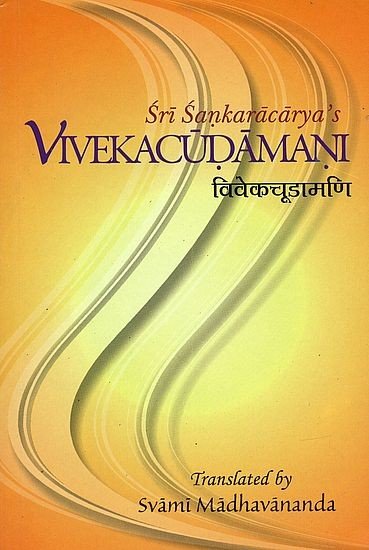Vivekachudamani
by Shankara | 1921 | 49,785 words | ISBN-13: 9788175051065
The Vivekachudamani is a collection of poetical couplets authored by Shankara around the eighth century. The philosophical school this compilation attempts to expose is called ‘Advaita Vedanta’, or non-dualism, one of the classical orthodox philosophies of Hinduism. The book teaches Viveka: discrimination between the real and the unreal. Shankara d...
Verse 56
न योगेन न सांख्येन कर्मणा नो न विद्यया ।
ब्रह्मात्मैकत्वबोधेन मोक्षः सिध्यति नान्यथा ॥ ५६ ॥na yogena na sāṃkhyena karmaṇā no na vidyayā |
brahmātmaikatvabodhena mokṣaḥ sidhyati nānyathā || 56 ||56. Neither by Yoga, nor by Sānkhya, nor by work, nor by learning, but by the realisation of one's identity with Brahman is Liberation possible, and by no other means.
Notes:
[None of these, if practised mechanically, will bring on the highest knowledge—the absolute identity of the Jiva and Brahman—which alone, according to Advaita Vedanta, is the supreme way to liberation.
‘Yoga’ may mean Hathayoga which strengthens the body.
According to the Sankhya philosophy liberation
is achieved by the discrimination between Parasha and Brakriti. The Purusha is sentient but inactive, and all activity belongs to Prakriti, which is non-sentient, yet independent of the Purusha. The Sankhyas also believe in a plurality of Purushas. These are the main differences between the Sankhya and Vedanta philosophies.
Work—Work for material ends, such as getting to heaven and so forth, is meant.
Compare Svetasvatara Upanishad III. 8.—‘Seeing Him alone one transcends death, there is no other way.’]
